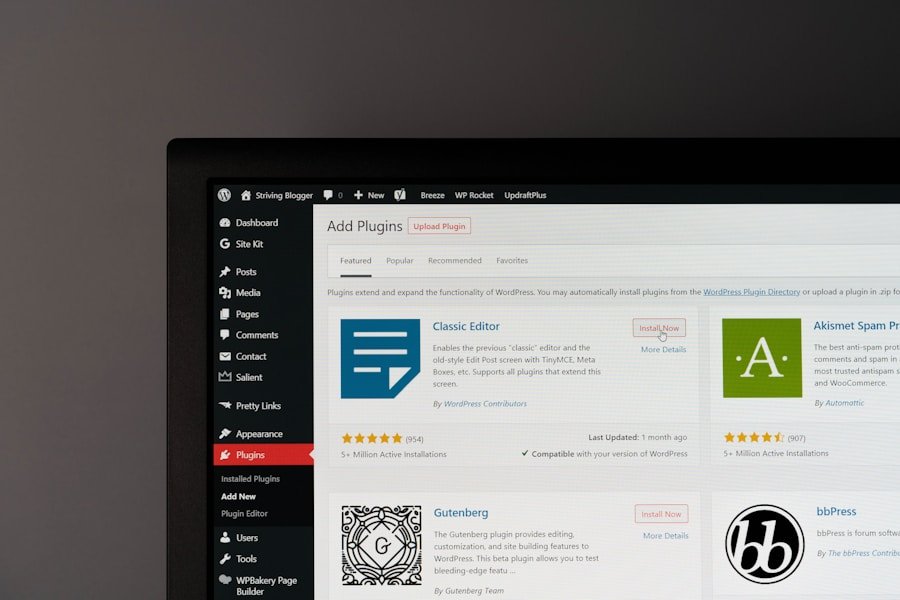When it comes to cloud security, it is essential to recognize the potential risks and threats that can compromise the integrity of your data. Data breaches, which occur when unauthorized users access sensitive information stored in the cloud, are a significant risk. This can lead to a loss of customer trust, financial repercussions, and damage to your company’s reputation.
Another potential threat is data loss, which can result from accidental deletion, hardware failure, or malicious attacks, causing significant downtime and loss of productivity for your business. In addition to data breaches and data loss, compliance and legal issues are also critical concerns in cloud security. Depending on the industry your business operates in, there may be specific regulations and standards that you must adhere to when storing and protecting sensitive data.
Failure to comply with these regulations can result in substantial fines and legal consequences. It is crucial to identify these potential threats and understand their implications on your business to effectively mitigate them and ensure the safety of your data in the cloud.
Key Takeaways
- Understanding the Risks: Identify potential threats in cloud security to better protect your data.
- Best Practices: Secure your data in the cloud by following best practices such as encryption and access control.
- Choosing the Right Solutions: Select the appropriate cloud security solutions for your business to ensure maximum protection.
- Importance of Regular Audits: Conduct regular security audits and updates in the cloud to stay ahead of potential threats.
- Training Your Team: Build a culture of cyber security awareness within your team to prevent security breaches.
Best Practices for Securing Your Data in the Cloud
Encryption: The First Line of Defense
One of the most critical practices is to encrypt your data, both when it is stored (at rest) and when it is being transmitted (in transit). This ensures that even if unauthorized users gain access to your data, they will not be able to read or use it without the encryption key.
Access Control and Authentication
Implementing strong access controls and authentication mechanisms can help prevent unauthorized access to your data. This includes using multi-factor authentication, role-based access controls, and regular password updates. By doing so, you can ensure that only authorized personnel have access to your data.
Backup and Monitoring
Regularly backing up your data to a separate, secure location is another crucial best practice for securing your data in the cloud. This ensures that even if your primary data is compromised or lost, you have a copy that you can restore from. Additionally, regularly monitoring and auditing your cloud environment for any suspicious activity or unauthorized access is vital. By staying vigilant and proactive in monitoring your cloud environment, you can quickly identify and respond to any potential security threats. By implementing these best practices, you can significantly reduce the risks associated with cloud security and ensure the safety of your data in the cloud.
Choosing the Right Cloud Security Solutions for Your Business
When it comes to choosing the right cloud security solutions for your business, it’s important to consider your specific needs and requirements. There are a wide range of cloud security solutions available, each with their own set of features and capabilities. One of the most important factors to consider when choosing a cloud security solution is the level of protection it offers.
Look for solutions that offer strong encryption, access controls, and monitoring capabilities to ensure the safety of your data. Another important consideration when choosing a cloud security solution is scalability. As your business grows, your security needs will also evolve.
It’s important to choose a solution that can easily scale with your business and adapt to changing security requirements. Additionally, consider the ease of integration with your existing systems and applications. Look for solutions that seamlessly integrate with your current infrastructure to minimize disruption and ensure a smooth transition to cloud security.
Finally, consider the reputation and track record of the cloud security provider. Look for providers with a proven track record of delivering reliable and effective security solutions. Additionally, consider factors such as customer support, training and resources provided, and overall value for money.
By carefully considering these factors, you can choose the right cloud security solution for your business that meets your specific needs and provides the level of protection required to keep your data safe in the cloud.
The Importance of Regular Security Audits and Updates in the Cloud
| Topic | Metrics |
|---|---|
| Cloud Security | Best Practices |
| Threat Detection | Incident Response Time |
| Data Encryption | Encryption Strength |
| Access Control | Authentication Methods |
Regular security audits and updates are crucial for maintaining the safety of your data in the cloud. Security audits help identify any vulnerabilities or weaknesses in your cloud environment that could be exploited by attackers. By conducting regular audits, you can proactively identify and address any potential security threats before they have a chance to compromise your data.
Additionally, regular updates are essential for ensuring that your cloud security measures are up-to-date and able to defend against the latest threats. In addition to regular audits and updates, it’s important to stay informed about the latest developments in cloud security. This includes staying up-to-date on new threats, vulnerabilities, and best practices for securing your data in the cloud.
By staying informed, you can proactively adapt your security measures to address new threats and ensure the ongoing safety of your data. Regular training and education for your team members is also essential for maintaining strong cloud security. By keeping your team informed about best practices and potential threats, you can build a culture of cyber security awareness within your organization.
Training Your Team: Building a Culture of Cyber Security Awareness
Building a culture of cyber security awareness within your organization is essential for maintaining strong cloud security. Your team members are often the first line of defense against potential security threats, so it’s important to ensure that they are well-informed and educated about best practices for securing data in the cloud. Regular training sessions and educational resources can help keep your team members informed about potential threats and how to respond to them effectively.
In addition to training sessions, it’s important to encourage open communication about potential security threats within your organization. Encourage team members to report any suspicious activity or potential vulnerabilities they may come across in the cloud environment. By fostering an open and transparent culture around cyber security, you can ensure that potential threats are quickly identified and addressed before they have a chance to compromise your data.
By investing in training and education for your team members, you can build a strong culture of cyber security awareness within your organization that helps maintain the safety of your data in the cloud.
Responding to Security Breaches: Developing a Cloud Incident Response Plan
Key Components of a Cloud Incident Response Plan
A cloud incident response plan should outline clear steps for identifying and containing the breach, as well as communicating with relevant stakeholders about the incident.
Testing and Updating the Plan
In addition to having a clear incident response plan, it’s important to regularly test and update the plan to ensure its effectiveness. Conducting regular drills and simulations can help identify any weaknesses or gaps in the plan that need to be addressed.
Benefits of Regular Testing and Updates
By regularly testing and updating your incident response plan, you can ensure that your team is well-prepared to respond effectively in the event of a security breach in the cloud.
Future Trends in Cloud Security: What to Expect and How to Prepare
As technology continues to evolve, so do the threats and challenges associated with cloud security. It’s important for businesses to stay informed about future trends in cloud security in order to effectively prepare for potential threats. One emerging trend in cloud security is the use of artificial intelligence (AI) and machine learning (ML) for threat detection and response.
AI and ML technologies can help automate threat detection processes and quickly identify potential security threats before they have a chance to compromise data. Another future trend in cloud security is the increasing focus on compliance and regulatory requirements. As more businesses move their operations to the cloud, there is a growing need for cloud security solutions that can effectively address industry-specific regulations and standards.
It’s important for businesses to stay informed about these evolving compliance requirements and ensure that their cloud security measures are able to meet these standards. In conclusion, securing your data in the cloud requires a proactive approach that involves understanding potential threats, implementing best practices for security, choosing the right solutions for your business, conducting regular audits and updates, training your team members, developing an incident response plan, and staying informed about future trends in cloud security. By following these guidelines, businesses can effectively mitigate potential risks and ensure the safety of their data in the cloud.
FAQs
What is cyber security in the cloud?
Cyber security in the cloud refers to the practices and technologies used to protect data, applications, and infrastructure in cloud computing environments from cyber threats and attacks.
Why is cyber security in the cloud important?
Cyber security in the cloud is important because it helps organizations protect their sensitive data, maintain regulatory compliance, and safeguard against cyber threats such as data breaches, malware, and unauthorized access.
What are the common cyber security threats in the cloud?
Common cyber security threats in the cloud include data breaches, insider threats, malware, phishing attacks, and denial of service (DoS) attacks.
How can organizations stay safe with cyber security in the cloud?
Organizations can stay safe with cyber security in the cloud by implementing strong access controls, encryption, regular security audits, employee training, and using reputable cloud service providers with robust security measures.
What are some best practices for cyber security in the cloud?
Best practices for cyber security in the cloud include implementing multi-factor authentication, regularly updating security patches, monitoring for suspicious activity, and creating a comprehensive incident response plan.










